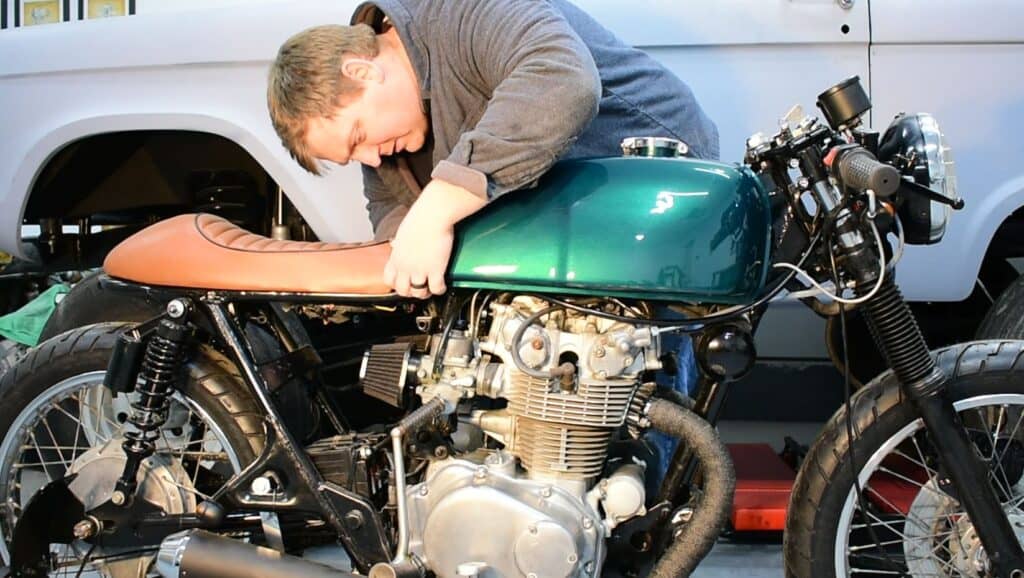
Every machine will have its quirks and motorcycles are no exception. Over the past decade I’ve come to find that although I love to ride, there are some common problems I’ve run into with motorcycles I’ve owned.
These common problems were no stranger to me since I’ve restored dozens of motorcycles. Here’s what I learned and here’s what you can do to combat these problems so you can continue to enjoy your ride.
Carburetor Issues
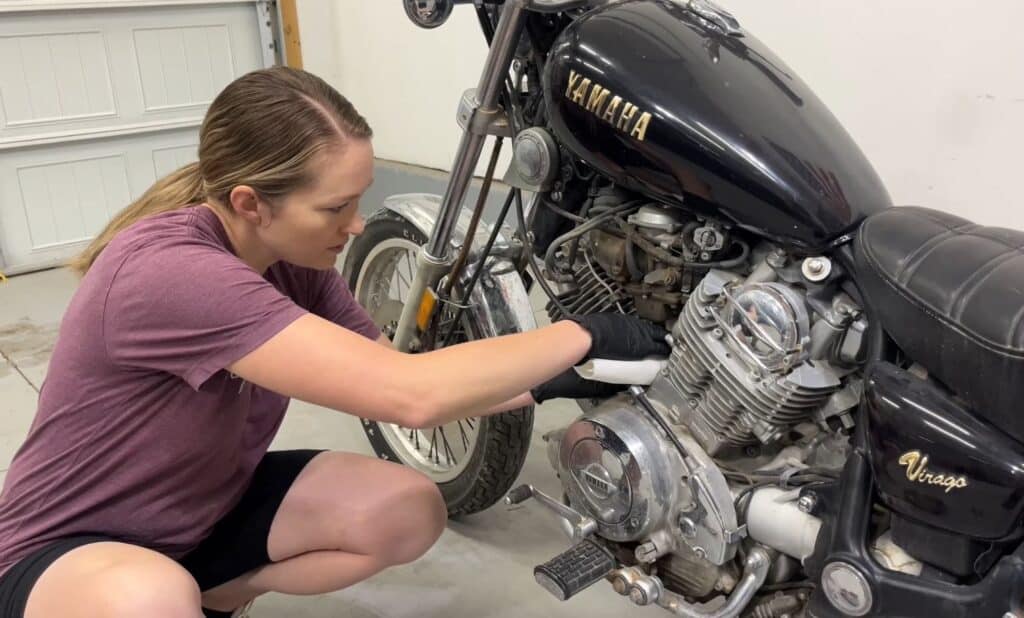
Though you’ll likely see more and more motorcycles with fuel injectors, the majority of motorcycles will have a carburetor. As simple as of a system the carburetor has, it’s proven to be probably one of the most finicky and problematic part a motorcycle can have.
The carburetor is the part of the motorcycle that essentially mixes the proper amount of air and fuel the engine will need to start the combustion process. When it malfunctions, that means the motorcycle has running issues or simply can’t run at all.
The most common problems I’ve seen within a carburetor is gas leaks, vacuum leaks, brittle gaskets, plugged jets, and getting all around gunked up. These are all issues that will mean poor performance of the motorcycle and can leave a rider feeling frustrated and stuck.
The best way to ensure you don’t have carb issues is to simply clean out the carburetor once every 1-2 years. It’s most thorough if you take it apart and clean each piece with an ultrasonic cleaner (like this one found on Amazon.com) and replace any gaskets as needed. If taking the carburetor apart sounds daunting, click here to see my other article to learn how to clean a carburetor without removing it.
Chain Maintenance
The chain on the motorcycle is the driving force that makes it go in the first place. You have the engine where the power comes from and you have the tires that carry the motorcycle on the road, but you need something to connect to the two to make it move forward.
Routine chain maintenance is essential when it comes to owning a motorcycle. Though it is a simple task, the consequences of using an untreated chain can be quite dangerous.
It is possible for the chain to break and having too loose or too tight of tension can make it do so. The actual break of the chain isn’t much of a concern as what the chain does after it breaks. It’s possible for the broken chain to jam up the sprockets which can ultimately bring the motorcycle to a halt since a seized sprocket means a seized rear tire. It’s also possible for a broken motorcycle chain to flip back and hit the car behind if the rider is going fast enough.
With that being said, its not as common for a broken chain to cause such horrible results. But a broken chain is common for motorcycle owners so it’s important to be aware of the proper maintenance a chain requires and know the signs to look for if the chain has run it’s course. To learn more about what happens to a motorcycle chain when it breaks, see my other article by clicking here.
Flat Tires
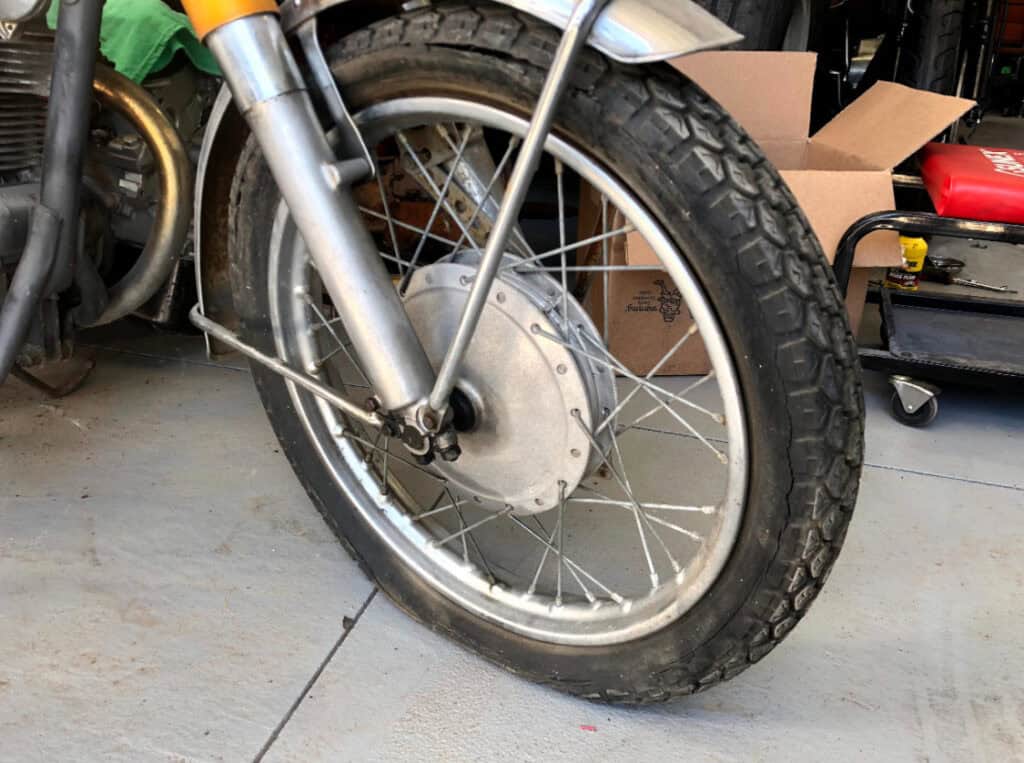
Any machine that uses tires is prone to having flats and motorcycles are no exception. One common problem motorcycles tend to have is a flat tire and it can be more annoying and inconvenient compared to a similar scenario with other vehicles.
The reason flat tires are common among motorcycles is because a lot of riders don’t really take the proper care and maintain them. In other words, the issues is usually preventable with the exception of hitting a nail on the road or something similar. There are obvious signs to look for if a tire is worn and needs to be replaced such as bald spots, places that are bulging, and cracks or brittle spots.
Age, persistent usage, and constant exposure to sunlight are factors that will increase the likelihood of a flat tire. Flat tires can be dangerous to a rider, especially if a flat tire occurs while out for a ride (also known as a blown tire). To learn more about motorcycle tire maintenance, see my other article by clicking here.
Less Protection
An obvious common problem motorcycles will have is they provide less protection for the operator compared to other vehicles. When someone rides a motorcycle, they’re completely out in the open with nothing around them which means accidents can be more serious if they were to occur.
A common misconception people often think is that motorcycles are extremely dangerous vehicles. The truth is that motorcycles themselves aren’t dangerous, rather it’s the driver and their skills while riding that makes the experience dangerous. Granted, there are plenty of dangerous situations that happen to no fault of the rider (i.e. other drivers’ ignorance). In either case, that’s why having less protection can be a problem.
Engineers are working hard to find ways to make motorcycles a little more safe. For example, some are looking for ways to implement airbags and anti-lock brakes so collisions aren’t so dangerous. With improvements such as these, this common problem can be less of a worry for those who want to ride.
Cold Weather Start-Ups
Cold winters have a tendency to be quite harsh on the vehicles we drive and this is especially true for motorcycles. In fact, the majority of motorcycle owners have a difficult time starting their motorcycle if the temperature was below freezing the night before. Having lived in northern Utah and Southern Idaho, starting up motorcycles during the cold, brisk winter when I was trying to restore them was….well….the worst!
The usual culprit for difficult start-ups in the cold is due to the battery. The voltage on batteries slowly decreases over time during freezing temperatures. This happens mostly because people are riding their motorcycles less during cold weather so the battery isn’t being charged by the stator. And any parasitic drain that’s happening will manifest itself by less usage of the motorcycle.
In addition to the battery, cold temperatures are also harsh on motorcycle engines. A good freeze can make the oil inside the engine thicken up which means the engine needs more power from the battery to get it started. And since cold weather is also harsh on batteries too, a motorcycle battery sometimes can’t give the amperage the engine needs to start. It’s a vicious cycle. But with a little bit of preventative maintenance, you can completely avoid problems like this. See my other article here to learn how to do so.
Misuse Of Fuel

A motorcycle will be able to run initially if you put any basic type of fuel in the gas tank. But before long the motorcycle will begin to have issues if you don’t put in the right type of fuel. Yep, that means most motorcycles require a certain type of fuel for optimal function.
Most motorcycles will require a higher octane (no less than a 91 rating) that is ethanol free. High octane gasoline is required for high compression engines which most motorcycles have. Ethanol free gas is especially important for motorcycles with a carburetor because it’s common for ethanol additives to eventually plug up the small jets inside.
Ethanol isn’t a bad thing, in fact the catalyzing effect ethanol has on octane helps it to maintain it’s burning efficiency. But when it’s in small, tight places such as inside the carburetor, it can gum up causing clogs which will ultimately mean no fuel can pass through the carburetor at all.
Again, this is a common problem with motorcycles that is easily preventable. Each rider just needs to make sure they pay attention to the gas they use and that they use gas stations that claim to have “ethanol free” gas. Click here to learn more about the right type of gas a motorcycle requires.
Backfiring
Backfiring is often a sound many people associate with motorcycles. There are even some riders out there that purposely make their motorcycle do it. Generally, however, it isn’t good for a motorcycle to backfire because that means there are underlying problems. And these problems are pretty common.
There are several reasons why a motorcycle can backfire, but the most common reason includes the engine running lean or running rich. These issues trace back to the carburetor (usually clogged jets or a vacuum leak).
When an engine runs rich, that means the cylinder is getting too much fuel and not enough air. Too much fuel could lead to the spark plug being unable to ignite all the fuel. The excess fuel will be carried out into the extremely hot exhaust pipes and combust with the atmospheric air which causes that popping sound.
When an engine runs lean, that means its getting too much air and not enough fuel. Air doesn’t burn, the fuel does. So when there’s way too much air then sometimes the fuel won’t combust. Then as soon as the exhaust valve opens and the air/fuel mixture hits the hot exhaust header, the fuel ignites and makes the loud bang sound.
Battery Issues
Battery issues are probably the most common problem motorcycles can have. Motorcycle batteries can be a bit finicky if they’re not maintained just right and most motorcyclists have to learn how to deal with them through trial and error.
There’s a lot that can effect how a battery works such as temperature, age of the battery, age of the motorcycle, how it’s stored, and how often it’s charged. As I had mentioned before, cold air can be brutal to motorcycle batteries if they’re not connected to a charger or there’s some sort of parasitic drain or poor grounding.
Over the past few years I have bought and sold dozens of motorcycles. I usually buy bikes that aren’t running because the fix is normally pretty easy; a gunked up carburetor or a poorly grounded battery. These are simple fixes if you do a little research and maybe watch a few Youtube videos about how the electrical system works. See my other article here to learn more about how to maintain a motorcycle battery in the winter.
Electrical Issues
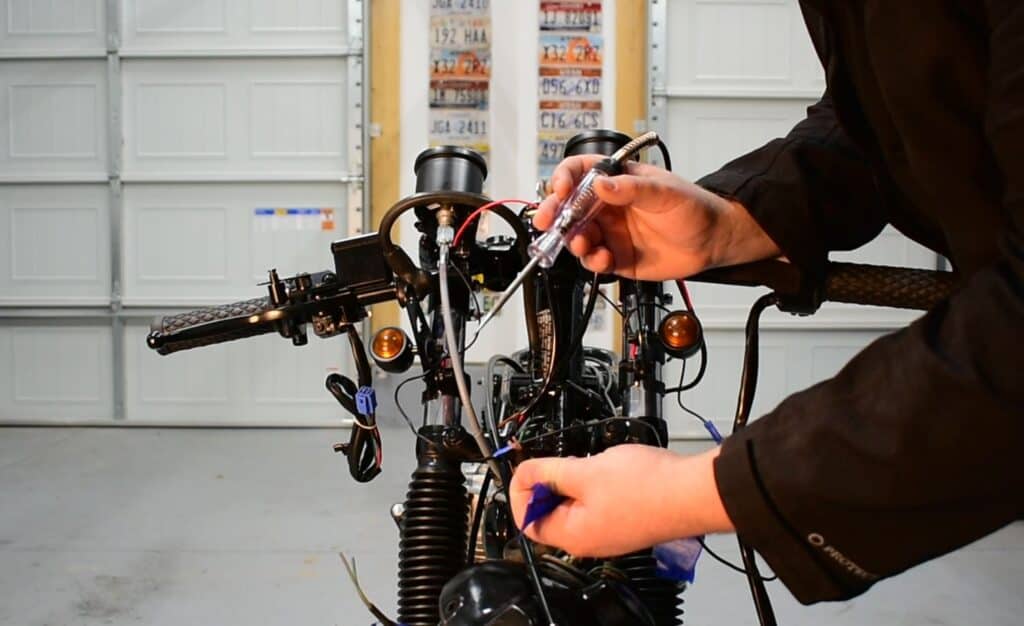
Now that we’ve talked about motorcycle batteries, let’s discuss common problems with electrical issues. Battery issues and electrical issues can go hand in hand, but they can also be completely separate problems. You can have a perfectly good battery and still run into electrical issues.
Motorcycles are prone to electrical concerns because of how much the wires are exposed compared to other vehicles. Water and/or sunlight can easily destroy wiring if they’re not connected or protected right. And any time a motorcyclist has to break into any wiring, there are potential problems down the road because electrical is tricky and most people don’t know what they’re doing.
Throttle Response
Ideally, motorcycles should increase in speed when you twist the throttle. Sometimes that’s not the case and this can be seen as a common problem when you aren’t getting the acceleration you want or need. This can often be frustrating for riders since a lot of them ride a motorcycle for their ease.
Poor throttle response happens when the engine isn’t getting what it needs to properly fire up and make the motorcycle go faster. This could be anywhere from the spark plugs not igniting the fuel, not enough fuel/too much air, and too much air/not enough fuel.
There could be several reasons why a motorcycle has a delayed throttle response and some of the most common reasons include carb issues, vacuum leaks, and poor timing advance. A lot of these causes can be prevented through regular maintenance though sometimes you can’t help the issue when it comes to the timing. For more information about why a motorcycle loses power when accelerating see my other article here.
Squeaky Brakes
Squeaky brakes are more common among motorcycles compared to other vehicles because they’re more exposed. For example, the brakes on a car have a bit more covering from hub caps and the body of the car. Brakes on a motorcycle really don’t have any covering and are more susceptible to the elements.
Common reasons a motorcycle has squeaky brakes is rocks getting lodged in between the brake pad and rotor as well as water and moisture getting in there. Other reasons may include worn out brake pads, uneven rotors, and no grease in between the caliper piston and the brake pad.
Brake maintenance on a motorcycle is essential since it has everything to do with safety. If you’re worried about squeaky brakes, make sure to inspect them several times a year and you shouldn’t have much of a problem.
Clutch Handle Tightness
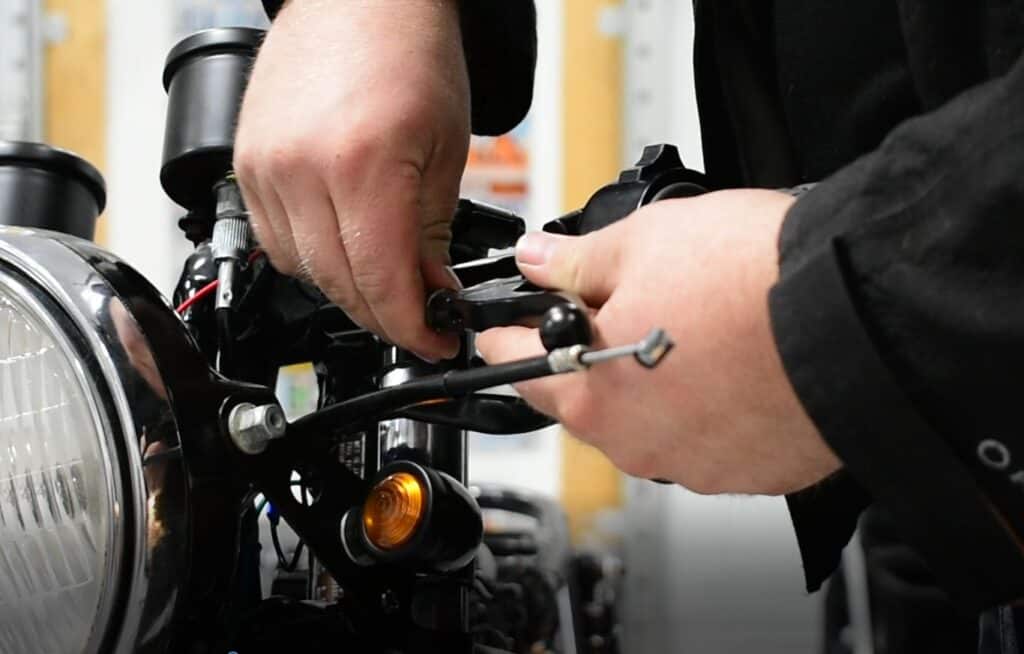
Most motorcycles out there have a manual gear box and with that comes a clutch handle. Pulling in the clutch lets a rider change gears depending on what speed they’re going. Motorcycles commonly have issues with the tightness of these clutch handles.
Clutch handles can either be too loose or too tight. Too loose can mean you won’t have enough force to disengage the clutch. Too tight of a clutch handle means that the clutch will always be disengaged.
The usual cause for a too tight of a clutch is that the owner or a mechanic tightened the cable too much. A too loose clutch handle means the cable has become loose over time so it just needs a little bit of tightening. It’s a common problem but it can easily be fixed by simply adjusting the cable screw a few turns.
So, Are Motorcycles Worth It?
After reading this list of common motorcycle problems, you may be wondering if having a motorcycle is even worth it. Yes, they are absolutely worth it! If you were to compare the list of common problems a car has compared to common problems a motorcycle has, the car’s list would be much larger.
Every machine and source of transportation is going to have problems no matter what. Motorcyclists will occasionally run into issues, but a lot of these can be prevented through basic maintenance and an occasional visual inspection. It’s good to be aware of these problems if you own a bike or you’re thinking about buying one; that in itself can ensure you won’t run into these near as often and can enjoy your motorcycle rides rather than spend more time fixing it.
